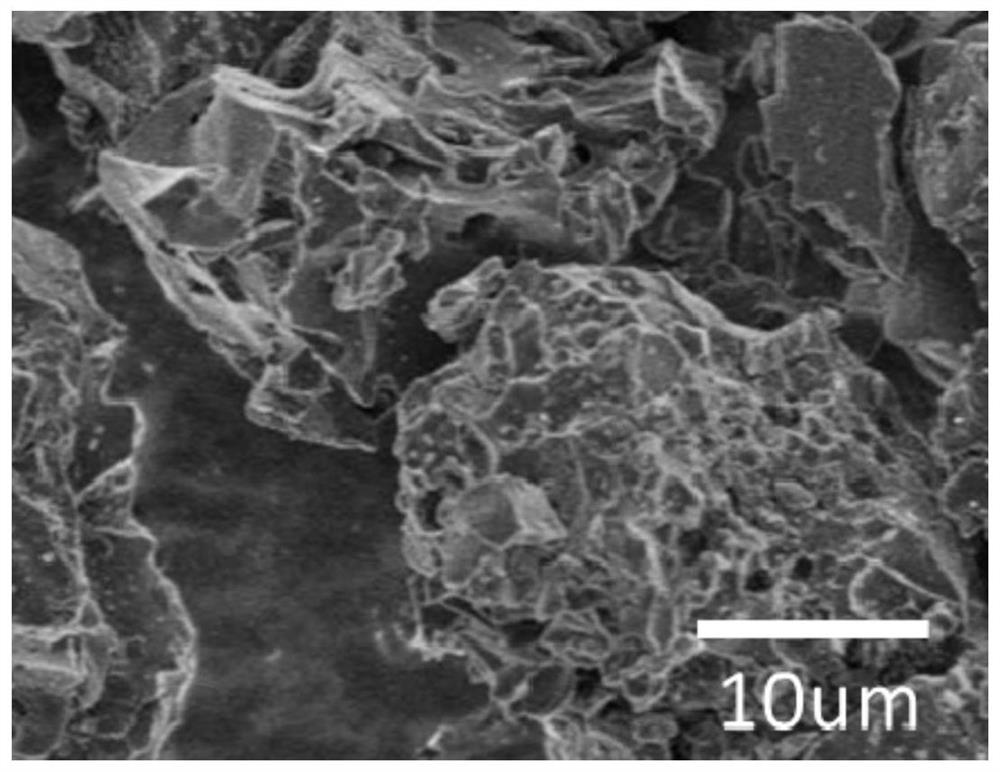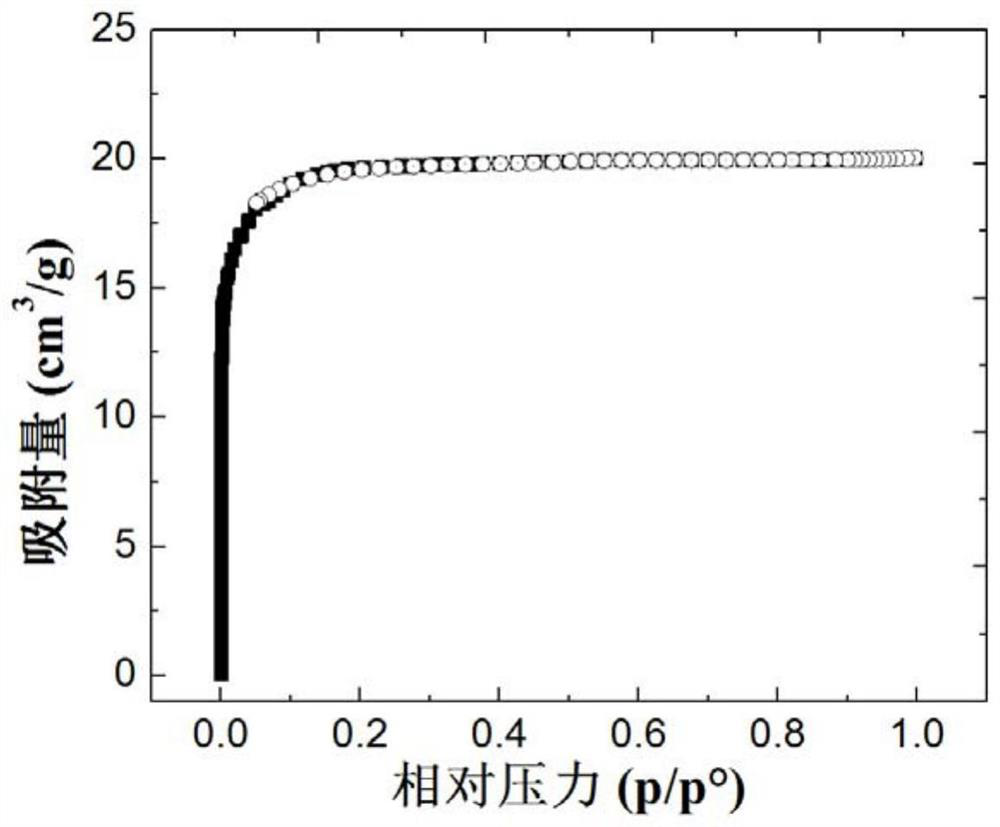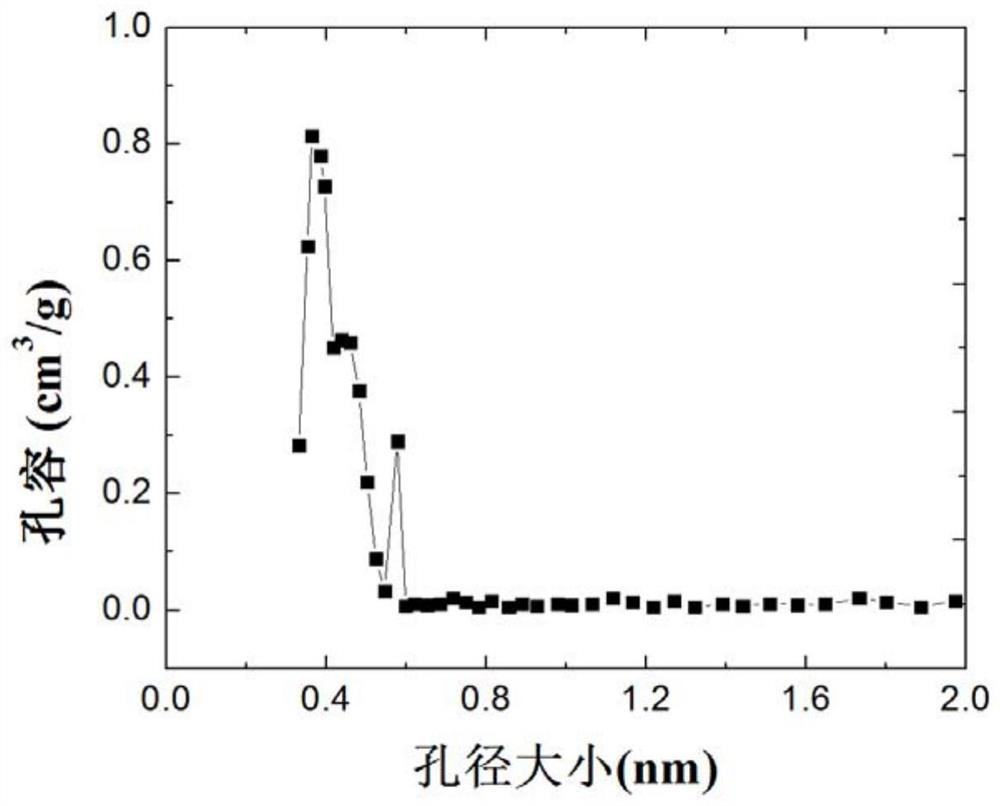Amorphous carbon negative electrode material as well as preparation method and application thereof
A negative electrode material and amorphous carbon technology, which is applied in the preparation/purification of carbon, battery electrodes, structural parts, etc., can solve the problems of performance degradation of amorphous carbon negative electrode materials, etc., to increase the adsorption energy barrier, reduce the contact internal resistance, The effect of improving mass specific capacity
- Summary
- Abstract
- Description
- Claims
- Application Information
AI Technical Summary
Problems solved by technology
Method used
Image
Examples
Embodiment 1
[0106] In this example, the anti-adsorption amorphous carbon negative electrode material was prepared according to the following method:
[0107] (1) Put 800g of coconut shell in a box furnace under a nitrogen atmosphere and heat up to 500°C at a rate of 5°C / min, carbonize for 6h, then cool to 25°C to obtain 220g of carbonized material, which is pulverized by a ball mill. The median particle size of the material is crushed to 1.5 μm to obtain carbon particles;
[0108] (2) Add 100g of carbon particles to 500g of gelatin aqueous solution with a mass fraction of 60%, place it in an oil bath with a magnetic stirrer, heat it to 60°C and stir for 8 hours to form a uniformly mixed viscous sol ;
[0109] (3) Add 50g of sodium bicarbonate to the viscous sol, continue to stir for 2 hours, stop stirring, raise the temperature to 130°C and keep it warm for 4 hours, after the expansion reaction, freeze-dry to obtain a three-dimensional foam composite material with a mass of 420g ;
[0...
Embodiment 2
[0125] In this example, the anti-adsorption amorphous carbon negative electrode material was prepared according to the following method:
[0126] (1) Put 600g of asphalt in a box furnace under a nitrogen atmosphere and heat up to 650°C at a heating rate of 3°C / min, carbonize for 4 hours, and then cool to 25°C to obtain 200g of carbonized material, which is pulverized by a ball mill, and the material is The median particle size was crushed to 1.0 μm to obtain carbon particles;
[0127] (2) Add 200g of carbon particles into 250g of 40% thermoplastic phenolic resin alcohol solution, place in an oil bath with a magnetic stirrer, heat to 55°C and stir for 10h to form a uniformly mixed viscous viscous sol;
[0128] (3) Add 60g of sodium oxalate to the viscous sol, continue stirring for 3 hours, stop stirring, raise the temperature to 260°C and keep it warm for 4 hours, after the expansion reaction, freeze-dry to obtain a three-dimensional foam composite material with a mass of 330g...
Embodiment 3
[0136] In this example, the anti-adsorption amorphous carbon negative electrode material was prepared according to the following method:
[0137] (1) Put 800g of apricot shells in a box furnace under a nitrogen atmosphere and heat up to 500°C at a heating rate of 5°C / min, carbonize for 6 hours, and then cool to 25°C to obtain a carbonized material, which is pulverized by a ball mill, and the material is The median particle size was crushed to 0.5 μm to obtain carbon particles;
[0138] (2) Add 100g of carbon particles to 860g of 70% gelatin aqueous solution, place in an oil bath with a mechanical stirrer, heat to 60°C and stir at 30r / min for 8h to form a uniformly mixed viscous viscous sol;
[0139] (3) Add 5 g of calcium carbonate to the viscous sol, continue stirring at 30 r / min for 2 hours, stop stirring, raise the temperature to 130° C. for 4 hours, and after the expansion reaction, freeze-dry to obtain a three-dimensional foam composite material;
[0140] (4) Take the a...
PUM
| Property | Measurement | Unit |
|---|---|---|
| thickness | aaaaa | aaaaa |
| particle size | aaaaa | aaaaa |
| particle size | aaaaa | aaaaa |
Abstract
Description
Claims
Application Information
 Login to View More
Login to View More - R&D
- Intellectual Property
- Life Sciences
- Materials
- Tech Scout
- Unparalleled Data Quality
- Higher Quality Content
- 60% Fewer Hallucinations
Browse by: Latest US Patents, China's latest patents, Technical Efficacy Thesaurus, Application Domain, Technology Topic, Popular Technical Reports.
© 2025 PatSnap. All rights reserved.Legal|Privacy policy|Modern Slavery Act Transparency Statement|Sitemap|About US| Contact US: help@patsnap.com



